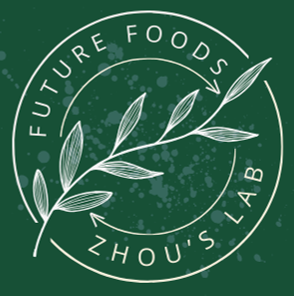Increasing the loading/encapsulating efficiency, gastrointestinal stability, and oral bioavailability of lipophilic bioactives
Introduction
Many lipophilic bioactives (such as vitamins, $\beta$-carotene, and polyphenols) are beneficial to us, regarded as antioxidants, and used to clean free radicals. However, they normally have low bioavailability, because of their poor solubility, crystallization, and chemical stability, which leads to a large space to be improved for the development of bioactives-based functional foods. There is still a need to increase their loading/encapsulating efficiency, gastrointestinal stability, and bioaccessibility.
At present, using advanced nanocarriers is regarded as an effective way to increase their oral bioavailability. It has many benefits to use nanocarriers to deliver lipophilic bioactives (LBs). First, these bioactives can be dissolved and encapsualted into the hydrophobic phase of nanocarrier, which can significantly increase the water-solubility of LBs and avoid the potential crystallizations. Besides, the nanocarriers are kinetically stable, and thus increase the stability of LBs in solutions. The nanoemulsion is one of common food-grade nanocarriers, where the emulsifiers can reduce the interfacial free energy of O/W phases. It has been reported that it effectively increases the water-solubility, gastrointestinal stability and adsorption of LBs. A structural design approach to optimize these delivery systems, where we can optimize different oil phases, emulsifier types, and structural properties of emulsions, by maximizing their encapsulating and delivery efficiency.
Additionally, we are also interesting in how the human gastrointestinal environment can bring significant effects on their delivery and absorptions, in particularly the potential effects of pH, salts, digestive enzymes, and the ways to be absorbed within gastrointestinal tract.
Main findings
- Optimizing delivery systems
Many factors could be expected to impact the oral bioavailability of the LBs in the delivery systems, including 1) emulsifier type: some emulsifiers could be altered by the pH and tend to aggregate. They could be also digested by the digestive enzymes, for example, nanochitin and nanocellulose. It means that the lipids trapped in these aggregates could be hardly digested into the mixed micelles, and thus decreases the oral bioavailability of LBs. 2) lipid type: the large LB could be hardly solubilized in the short, even median-chain lipids. For example, the long-chain $\beta$-carotene cannot be effectively solubilized in the coconut oil, which usually needs a long-chain lipids, such as some vegetable oils. 3) droplet size: digesting the large size of droplets takes longer time and enzymes, so they could not be digested completely, while the small size of droplets can be digested within a short time, and most of them can be formed to mixed micelles used to solubilize the LBs. 4) physicochemical properties of LBs: some LBs (such as polyphenols) could form non-covalent interactions with the digestive enzymes, which could slow down the process of lipid digestion. Recently, we have found that the LogP value of lipophilic polyphenol is an important factor to affect their gastrointestinal stability. A smaller LogP value means more hydrophilic, which means that most of polyphenols could be dissolved in the water phase, and they could be easily degraded or aggregated.
This project is still in the progress, and we will present more findings once they are published.
Publications
[1]. Dai, L.; Zhou, H.; Wei, Y.; Gao, Y.; McClements, D. J., Curcumin encapsulation in zein-rhamnolipid composite nanoparticles using a pH-driven method. Food Hydrocolloids 2019, 93, 342-350. DOI
[2]. Tan, Y.; Zhou, H.; Zhang, Z.; McClements, D. J., Bioaccessibility of oil-soluble vitamins (A, D, E) in plant-based emulsions: impact of oil droplet size. Food & Function 2021, 12 (9), 3883-3897. DOI
[3]. Zheng, B.#; Zhou, H.#; McClements, D. J., Nutraceutical-fortified plant-based milk analogs: Bioaccessibility of curcumin-loaded almond, cashew, coconut, and oat milks. LWT 2021, 147, 111517. DOI
[4]. Zhou, H.; Zheng, B.; McClements, D. J., In Vitro Gastrointestinal Stability of Lipophilic Polyphenols is Dependent on their Oil–Water Partitioning in Emulsions: Studies on Curcumin, Resveratrol, and Quercetin. Journal of Agricultural and Food Chemistry 2021, 69 (11), 3340-3350. DOI
[5]. Zhou, H.; Zheng, B.; McClements, D. J., Encapsulation of lipophilic polyphenols in plant-based nanoemulsions: impact of carrier oil on lipid digestion and curcumin, resveratrol and quercetin bioaccessibility. Food & Function 2021, 12 (8), 3420-3432. DOI
[6]. Tan, Y.#; Zhou, H.#; McClements, D. J., Application of static in vitro digestion models for assessing the bioaccessibility of hydrophobic bioactives: A review. Trends in Food Science & Technology 2022, 122, 314-327. DOI
Presentations
[1]. D.J. McClements, Y. Tan, H. Zhou, Utility of INFOGEST Method to Test the Efficacy of Vitamin and Nutraceutical Delivery System. 2021, INFOGEST Webinar Series on Food Digestion, INFOGEST.
